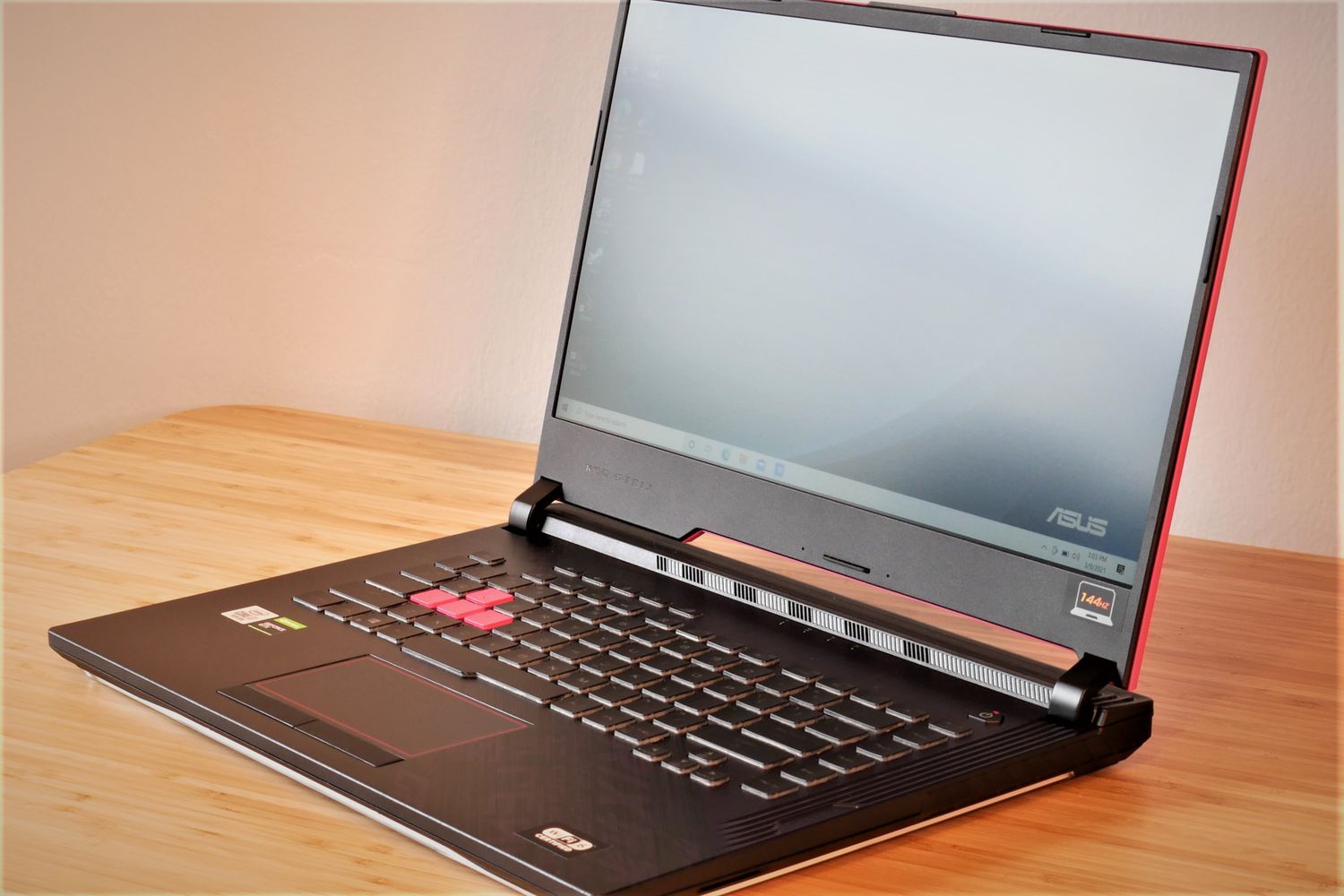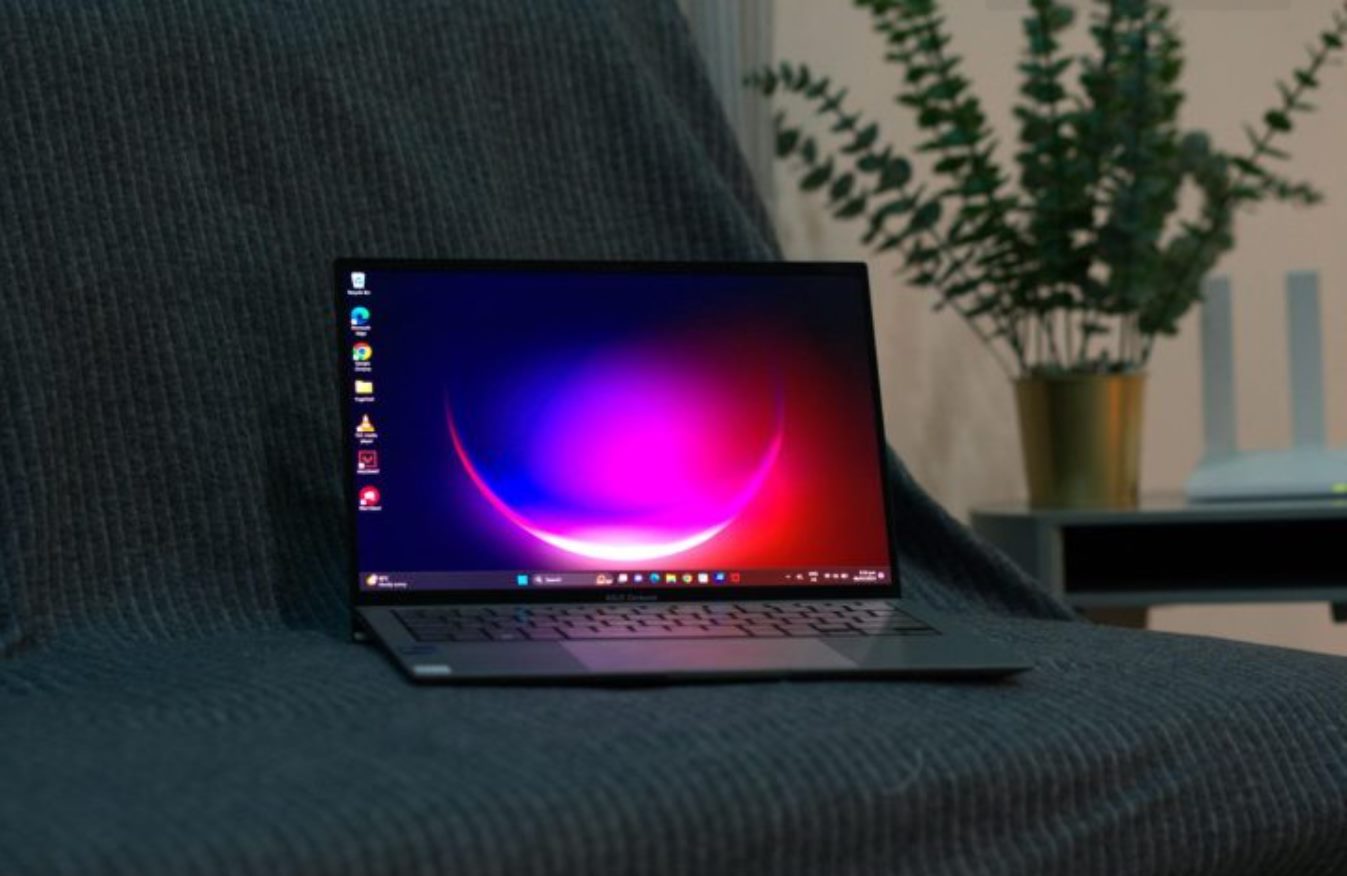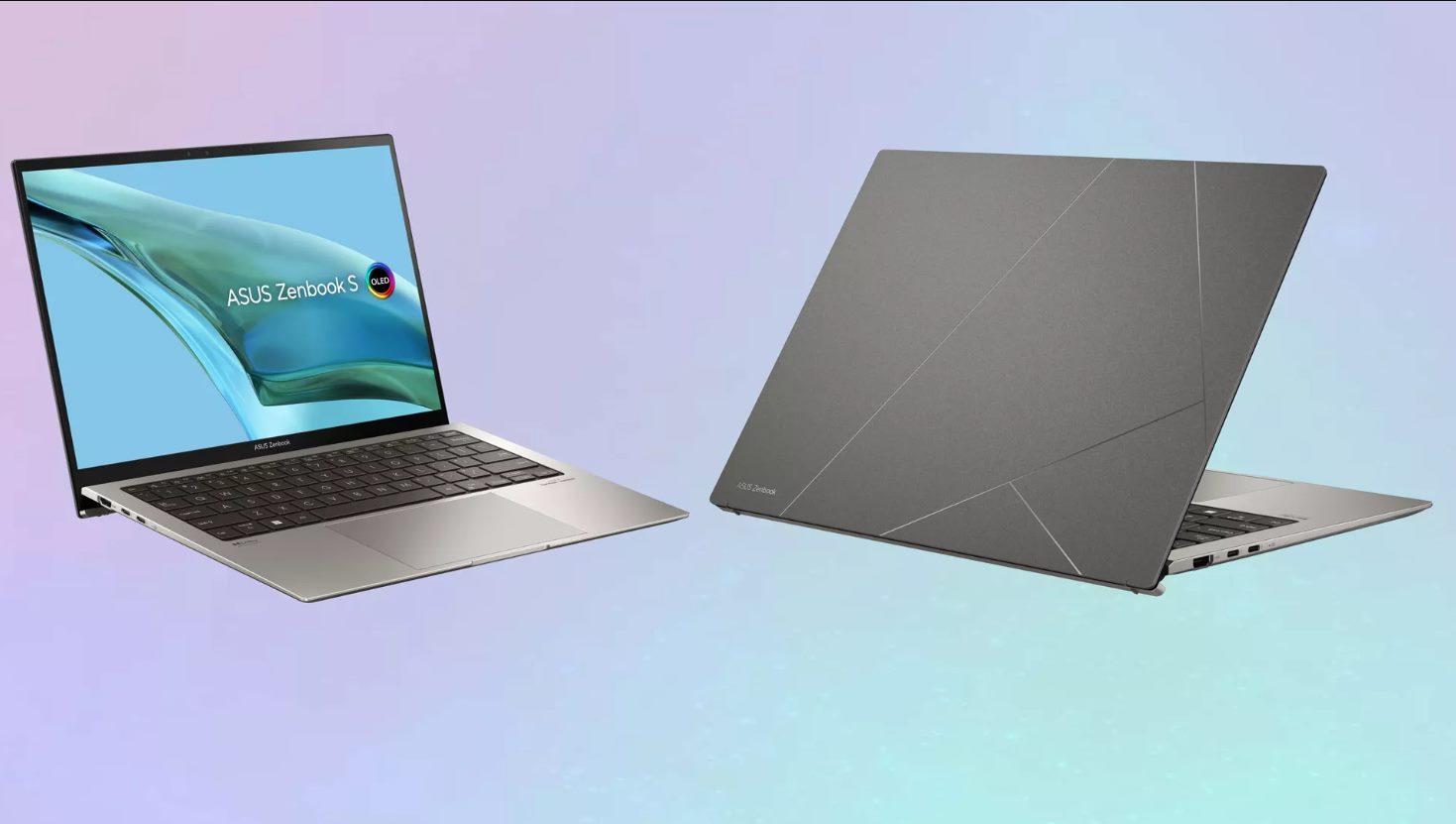Introduction
Welcome to this guide on how to reformat your ASUS Ultrabook S500C running Windows 10. If you’re experiencing sluggish performance, system errors, or simply want a fresh start, reformatting your laptop can be a great solution. By following these steps, you’ll be able to wipe your hard drive and reinstall Windows 10, giving your Ultrabook a clean slate.
Before we dive into the process, it’s important to note that reformatting your laptop will erase all the data stored on it. Therefore, it’s crucial to back up any important files and data before proceeding. This will ensure that you don’t lose any valuable information in the reformatting process.
In addition to backing up your files, you’ll also need to download the necessary drivers and software for your Ultrabook. These will be needed later to restore functionality and optimize performance after the reformatting process.
To begin reformatting your ASUS Ultrabook S500C, you’ll need to create a USB bootable drive. This will serve as the installation medium for Windows 10 and allow you to proceed with the reinstallation process easily.
Once you have the USB bootable drive ready, you’ll need to access the BIOS settings of your Ultrabook. BIOS, short for Basic Input/Output System, contains the firmware that controls the boot process. By accessing the BIOS settings, you can change the boot order and make sure your Ultrabook boots from the USB drive rather than the internal hard drive.
After adjusting the boot order, you’ll boot your Ultrabook from the USB drive and proceed with formatting the hard drive. This will delete all existing partitions and data on the drive, preparing it for the reinstallation of Windows 10.
Once the hard drive is formatted, you’ll reinstall Windows 10 using the USB bootable drive. This process might take some time, but it’s essential for a clean and stable operating system installation.
Once the reinstallation is complete, you’ll need to install the necessary drivers and software for your ASUS Ultrabook S500C. These drivers will ensure that all hardware components are recognized correctly, and the software will provide additional functionality and optimize system performance.
By following these steps, you’ll be able to reformat your ASUS Ultrabook S500C and achieve a fresh start with a clean Windows 10 installation. Now, let’s get started with the first step: backing up your important files and data.
Backup your important files and data
Before proceeding with the reformatting process, it’s crucial to back up any important files and data on your ASUS Ultrabook S500C. This will ensure that you don’t lose any valuable information during the reinstallation of Windows 10.
There are several methods you can use to back up your files and data. Here are a few options:
- External storage devices: Connect an external hard drive, USB flash drive, or SD card to your Ultrabook and manually copy and paste the files and folders you want to back up. Make sure you have enough storage space on the external device to accommodate all your data.
- Cloud storage services: Utilize cloud storage services such as Google Drive, Dropbox, or Microsoft OneDrive to upload and sync your files to the cloud. This allows you to access your data from any device with internet access and provides an additional layer of security.
- Network storage: If your Ultrabook is connected to a local network, you can back up your files to a network-attached storage (NAS) device. This provides centralized storage accessible by multiple devices on the network.
When deciding which method to use, consider factors such as the size of your data, the level of convenience, and the security of your files. It’s good practice to have multiple backups in different locations or storage mediums to ensure redundancy and protect against data loss.
Remember to back up not only your personal files such as documents, photos, and videos but also any application-specific data or settings that are important to you. This might include email data, bookmarks, and saved game progress. Check the documentation of each application to find out where these files are stored, as they might be located in different directories.
Take your time to carefully review and double-check that you have backed up all the necessary files and data. It can be helpful to create a list or spreadsheet of the folders and files you have backed up to ensure nothing is missed.
Once you are confident that all your important files and data are backed up, you can proceed with the reformatting of your ASUS Ultrabook S500C. In the next section, we will discuss how to download the necessary drivers and software for a smoother reinstallation process.
Download the necessary drivers and software
Before you proceed with reformatting your ASUS Ultrabook S500C, it’s important to download the necessary drivers and software that will be required after the reinstallation of Windows 10. These drivers ensure that all hardware components are recognized correctly and function optimally, while the software provides additional functionality and enhances system performance.
To download the drivers and software, follow these steps:
- Identify your hardware: Make a note of the specific model numbers and manufacturers of the various hardware components in your Ultrabook, such as the graphics card, network card, sound card, and touchpad. This information can usually be found in the device manager or by referring to your Ultrabook’s documentation.
- Visit the manufacturer’s website: Go to the respective websites of each hardware component’s manufacturer and navigate to the support or downloads section. Look for the drivers and software specifically designed for your Ultrabook model and Windows 10.
- Download the drivers and software: Locate the drivers and software that correspond to your Ultrabook’s hardware components and operating system. Download these files to a location on your Ultrabook or an external storage device, such as a USB flash drive or SD card.
- Organize the downloaded files: Create a dedicated folder on your Ultrabook or external storage device to store all the downloaded drivers and software. This will make it easier to locate and install them later.
While downloading the drivers and software, it’s important to ensure that you’re obtaining them from official and trusted sources. Avoid downloading from third-party websites, as they may provide outdated or modified drivers, which can cause compatibility issues or compromise system security.
Additionally, some manufacturers may provide driver update utilities or software suites that can automatically detect and install the latest drivers for your hardware. If available, consider using these utilities to simplify the process and ensure you have the most up-to-date drivers installed.
By downloading the necessary drivers and software in advance, you’ll be prepared to install them after the reformatting process is complete. This will help restore the functionality and optimize the performance of your ASUS Ultrabook S500C. In the next section, we will discuss how to create a USB bootable drive to begin the reinstallation of Windows 10.
Create a USB bootable drive
In order to reformat your ASUS Ultrabook S500C and reinstall Windows 10, you’ll need to create a USB bootable drive. This will serve as the installation medium for the operating system. Creating a USB bootable drive is a straightforward process and can be done using the Windows Media Creation Tool or third-party software.
To create a USB bootable drive using the Windows Media Creation Tool, follow these steps:
- Download the Windows Media Creation Tool: Visit the official Microsoft website and download the Windows Media Creation Tool. This tool allows you to download and create a bootable USB drive for installing Windows 10.
- Run the Windows Media Creation Tool: Locate the downloaded file and run the Windows Media Creation Tool. You may need administrator privileges to do this.
- Choose the installation media: When prompted, select the option to create installation media for another PC. This will allow you to create a USB bootable drive.
- Select the language, edition, and architecture: Choose the desired language, edition (such as Windows 10 Home or Pro), and architecture (32-bit or 64-bit) for your installation. Make sure to select the options that match your Ultrabook and personal preferences.
- Select USB flash drive: When prompted to choose the media to use, select the option to create a USB flash drive. Make sure you have a USB drive with sufficient storage capacity plugged into your Ultrabook.
- Create the USB bootable drive: Follow the on-screen instructions to create the USB bootable drive. The tool will download the necessary Windows 10 files and copy them to the USB drive. This process may take some time, depending on your internet connection speed and the performance of your Ultrabook.
Once the USB bootable drive is created, it’s important to label it and keep it in a safe place. This will ensure that you can easily identify it later when you need to boot your Ultrabook from it.
Alternatively, you can use third-party software like Rufus or UNetbootin to create a USB bootable drive. These tools provide additional customization options and support for various operating systems. However, be sure to download these tools from trusted sources to avoid any potential malware or security risks.
With your USB bootable drive ready, you’re now prepared to proceed with the next step: accessing the BIOS settings of your ASUS Ultrabook S500C. This will allow you to change the boot order and ensure your Ultrabook boots from the USB drive for the reinstallation of Windows 10.
Access the BIOS settings
In order to proceed with reformatting your ASUS Ultrabook S500C, you’ll need to access the BIOS (Basic Input/Output System) settings. The BIOS contains the firmware that controls the boot process of your Ultrabook, and accessing these settings will allow you to change the boot order.
To access the BIOS settings of your ASUS Ultrabook S500C, follow these steps:
- Shut down your Ultrabook: Make sure your Ultrabook is completely powered off before proceeding.
- Turn on your Ultrabook: Press the power button to turn on your Ultrabook. As soon as you do this, start tapping the specific key or combination of keys to access the BIOS settings. The key or combination may vary depending on your Ultrabook model, but common keys to try are F2, Delete, or Esc. Refer to your Ultrabook’s documentation or the manufacturer’s website for the specific key to access the BIOS.
- Enter the BIOS settings: Once you press the correct key or combination and enter the BIOS settings, you’ll be greeted with a blue or black screen with various options and settings.
- Navigate the BIOS settings: Use the arrow keys on your keyboard to navigate through the different BIOS settings. Each BIOS interface may have a different layout and organization, but common sections to look for are Boot, Security, or Advanced settings.
- Find the boot order settings: Locate the boot order settings within the BIOS. This might be listed under the Boot or Advanced settings section.
The boot order settings determine the sequence in which your Ultrabook checks for bootable devices during startup. By default, the internal hard drive is usually set as the first boot device. You’ll need to change this to prioritize the USB drive as the first boot device.
Once you’ve located the boot order settings, follow the instructions within the BIOS to modify the boot sequence. Use the arrow keys to select the USB drive and move it to the top of the list. This will ensure that your Ultrabook boots from the USB drive when it starts up.
After making the necessary changes, save the settings and exit the BIOS. The specific key to save and exit may be displayed on the BIOS screen or mentioned in your Ultrabook’s documentation.
With the boot order changed, your ASUS Ultrabook S500C is now configured to boot from the USB drive. The next step is to boot your Ultrabook from the USB drive and proceed with the formatting of your hard drive. We’ll cover this process in the next section.
Change the boot order
In order to begin the reformatting process of your ASUS Ultrabook S500C, you’ll need to change the boot order in the BIOS settings. This will ensure that your Ultrabook boots from the USB drive that contains the Windows 10 installation files, rather than the internal hard drive.
To change the boot order, follow these steps:
- Access the BIOS settings: Start or restart your Ultrabook and enter the BIOS settings by pressing a specific key or combination of keys during the startup process. Common keys to try are F2, Delete, or Esc. Refer to your Ultrabook’s documentation or the manufacturer’s website for the specific key to access the BIOS.
- Navigate to the boot order settings: Use the arrow keys on your keyboard to navigate through the BIOS settings. Look for the option related to the boot order, which may be listed under the Boot or Advanced settings section.
- Modify the boot order: Select the option to modify the boot order and use the arrow keys to rearrange the devices. Move the USB drive to the top of the list to prioritize it as the first boot device. This will ensure that your Ultrabook boots from the USB drive when it starts up.
- Save the changes: After making the necessary changes to the boot order, save the settings and exit the BIOS. The specific key to save and exit may be displayed on the BIOS screen or mentioned in your Ultrabook’s documentation.
It’s important to note that the exact steps and terminology may vary depending on your Ultrabook model and BIOS version. However, the general process remains the same.
Changing the boot order allows your Ultrabook to prioritize the USB drive as the primary boot device. This ensures that when you boot your Ultrabook, it will search for the Windows 10 installation files on the USB drive first.
Once the boot order is modified, you’re ready to boot your ASUS Ultrabook S500C from the USB drive and proceed with the formatting of your hard drive. In the next section, we will discuss the steps to boot from the USB drive and begin the reinstallation of Windows 10.
Boot from the USB drive
Now that you’ve changed the boot order in the BIOS settings of your ASUS Ultrabook S500C, it’s time to boot your Ultrabook from the USB drive that contains the Windows 10 installation files. This will initiate the reformatting process and allow you to reinstall the operating system.
To boot from the USB drive, follow these steps:
- Insert the USB drive: Make sure the USB drive containing the Windows 10 installation files is properly inserted into a USB port on your Ultrabook.
- Power on your Ultrabook: Press the power button to turn on your Ultrabook. It should automatically detect the presence of the USB drive and display a prompt to boot from it. If your Ultrabook doesn’t automatically detect the USB drive, you may need to manually initiate the boot menu.
- Access the boot menu: To access the boot menu, press a specific key or combination of keys during the startup process. The key to access the boot menu may vary depending on your Ultrabook model, but common keys to try are F8, F10, or F12. Refer to your Ultrabook’s documentation or the manufacturer’s website for the specific key to access the boot menu.
- Select the USB drive: Once you access the boot menu, use the arrow keys on your keyboard to navigate to the option that represents the USB drive. This option may be labeled as “Removable Devices,” “USB Storage,” or something similar. Select the USB drive and press Enter to boot from it.
After selecting the USB drive as the boot device, your ASUS Ultrabook S500C will start the Windows 10 installation process. This may take a few moments as the necessary files are loaded and the setup interface is displayed.
During the Windows 10 installation process, you may be prompted to make certain selections, such as language preferences and installation type. Follow the on-screen instructions to proceed with the installation. It’s recommended to choose the option to perform a clean installation, which will format your hard drive and remove any existing data.
Once the installation process is complete, your Ultrabook will restart. At this point, make sure to remove the USB drive to prevent the system from booting from it again. Your ASUS Ultrabook S500C will now have a fresh installation of Windows 10.
In the next section, we will discuss how to format the hard drive to prepare it for the clean installation of Windows 10.
Format the hard drive
Once you have booted your ASUS Ultrabook S500C from the USB drive and initiated the Windows 10 installation process, it’s time to format the hard drive. Formatting the hard drive will erase all existing partitions and data, preparing it for a clean installation of the operating system.
To format the hard drive, follow these steps:
- Select the installation location: During the Windows 10 installation process, you will reach a step where you need to select the installation location. Look for a screen that displays the available drives and partitions on your Ultrabook.
- Delete existing partitions: To format the hard drive, you will need to delete all existing partitions. Select each partition one by one and click the “Delete” button until all partitions are removed. This will ensure that the entire hard drive is available for the new installation.
- Create new partitions (optional): If you prefer to create custom partitions on your hard drive, you can do so at this stage. The Windows installation wizard will allow you to allocate the desired amount of space for each partition. However, if you’re not familiar with partitioning or don’t have specific requirements, you can opt for the default configuration.
- Format the hard drive: After deleting any existing partitions and creating new ones if desired, select the unallocated space on the hard drive and click the “Format” button. Choose the file system format (usually NTFS) and follow the prompts to format the hard drive.
- Wait for the formatting process: The formatting process may take some time, depending on the size of your hard drive. Be patient and allow the process to complete without interruption.
Once the hard drive is formatted, you’re ready to proceed with the clean installation of Windows 10. The installation wizard will guide you through the remaining steps to set up the operating system, such as selecting language preferences, creating user accounts, and configuring basic system settings.
It’s important to note that formatting the hard drive will permanently delete all existing data. Therefore, it’s crucial to ensure that you have appropriately backed up any important files and data before proceeding with the formatting process.
In the next section, we will discuss the steps to reinstall Windows 10 and restore functionality to your ASUS Ultrabook S500C.
Reinstall Windows 10
Now that you have formatted the hard drive of your ASUS Ultrabook S500C, it’s time to reinstall Windows 10. Reinstalling the operating system will provide a fresh start, ensuring that your Ultrabook is running smoothly and optimized for performance. To reinstall Windows 10, follow these steps:
- Follow the Windows installation prompts: After formatting the hard drive, the Windows installation wizard will guide you through the remaining steps. Select your language preferences, accept the license terms, and choose the desired installation type (usually “Custom” or “Clean installation”).
- Select the installation location: When prompted to select the installation location, choose the newly formatted hard drive or the partition you created for the operating system. Click “Next” to proceed.
- Wait for the installation to complete: The installation process may take some time, depending on the speed of your Ultrabook and the version of Windows 10 being installed. Allow the process to complete without interruption.
- Set up user accounts and system settings: After the installation is complete, you will be prompted to set up user accounts and configure basic system settings. Follow the on-screen instructions to proceed with these initial setup steps.
- Activate Windows: Depending on the version of Windows 10 being installed, you may need to activate the operating system. Follow the prompts to enter the product key or choose the appropriate activation method.
- Windows updates: Once your Ultrabook is up and running with the freshly installed Windows 10, it’s important to check for and install any available Windows updates. These updates often include patches, bug fixes, and security enhancements to ensure the stability and security of your operating system.
After reinstalling Windows 10 and completing the initial setup steps, your ASUS Ultrabook S500C will be ready to use. However, it’s not fully functional just yet. In the next section, we will discuss how to install the necessary drivers and software to optimize system performance and restore full functionality to your Ultrabook.
Install necessary drivers and software
After reinstalling Windows 10 on your ASUS Ultrabook S500C, it’s important to install the necessary drivers and software to ensure optimal performance and functionality. These drivers will enable your Ultrabook to recognize and utilize its hardware components effectively, while the software will provide additional features and utilities.
To install the necessary drivers and software, follow these steps:
- Identify your hardware components: Make a note of the specific model numbers and manufacturers of the various hardware components in your Ultrabook, such as the graphics card, network card, sound card, and touchpad.
- Visit the manufacturer’s website: Go to the websites of each hardware component’s manufacturer and navigate to the support or downloads section.
- Download the drivers: Locate the drivers that correspond to your Ultrabook’s hardware components and the version of Windows 10 you have installed. Download these drivers to your Ultrabook or an external storage device.
- Install the drivers: Run the driver installation files and follow the on-screen instructions to install each driver. It’s recommended to start with important drivers such as the chipset, graphics, and network drivers.
- Check for Windows updates: After installing the necessary drivers, it’s essential to check for and install any available Windows updates. These updates may include additional driver updates, patches, or bug fixes that can further improve your Ultrabook’s performance.
- Install necessary software: Along with the drivers, you may also need to install specific software for your Ultrabook’s components, such as keyboard and touchpad utilities, audio enhancements, or system management tools. Refer to the manufacturer’s website for any recommended software or utilities for your Ultrabook.
By installing the necessary drivers and software, you ensure that your ASUS Ultrabook S500C is running with optimal performance and stability. It’s also a good idea to periodically check for updates to these drivers and software to keep them up to date.
Additionally, consider installing essential software for everyday tasks such as web browsing, productivity suites, antivirus software, and media players. These applications will enhance your Ultrabook’s functionality and allow you to fully utilize its capabilities.
As you install the drivers and software, keep in mind that not all hardware components may have specific software or drivers available. In such cases, Windows 10 will usually install generic drivers that ensure basic functionality.
With the necessary drivers and software installed, your ASUS Ultrabook S500C is now ready for use. Enjoy your refreshed Ultrabook with a clean Windows 10 installation and optimized performance!
Conclusion
Reformatting your ASUS Ultrabook S500C and reinstalling Windows 10 can breathe new life into your device, improving performance and reliability. By following the steps outlined in this guide, you can successfully complete the reformatting process and ensure a smooth reinstallation of the operating system.
Remember to carefully back up your important files and data before formatting the hard drive to avoid losing any valuable information. Additionally, downloading the necessary drivers and software for your Ultrabook ensures that all hardware components are recognized correctly and optimized for performance after the reinstallation.
Creating a USB bootable drive allows you to easily initiate the Windows 10 installation process, while changing the boot order ensures that your Ultrabook boots from the USB drive. Formatting the hard drive clears existing partitions, paving the way for a clean installation of Windows 10.
Once you’ve successfully installed Windows 10, don’t forget to install the necessary drivers and software specific to your Ultrabook’s hardware components. This will restore functionality and optimize the performance of your device.
Regularly check for Windows updates and keep your drivers and software up to date to ensure your Ultrabook remains secure and performs at its best.
With the reformatting process complete and your Ultrabook fully set up, enjoy the benefits of your refreshed device. Whether you experience improved speed, increased stability, or enhanced functionality, a clean installation of Windows 10 can make a significant difference in your computing experience.
Thank you for following this guide. We hope it has been helpful in reformatting your ASUS Ultrabook S500C and reinstalling Windows 10 successfully. If you have any further questions or need additional assistance, don’t hesitate to reach out to the manufacturer’s support or consult online resources for further guidance.

























